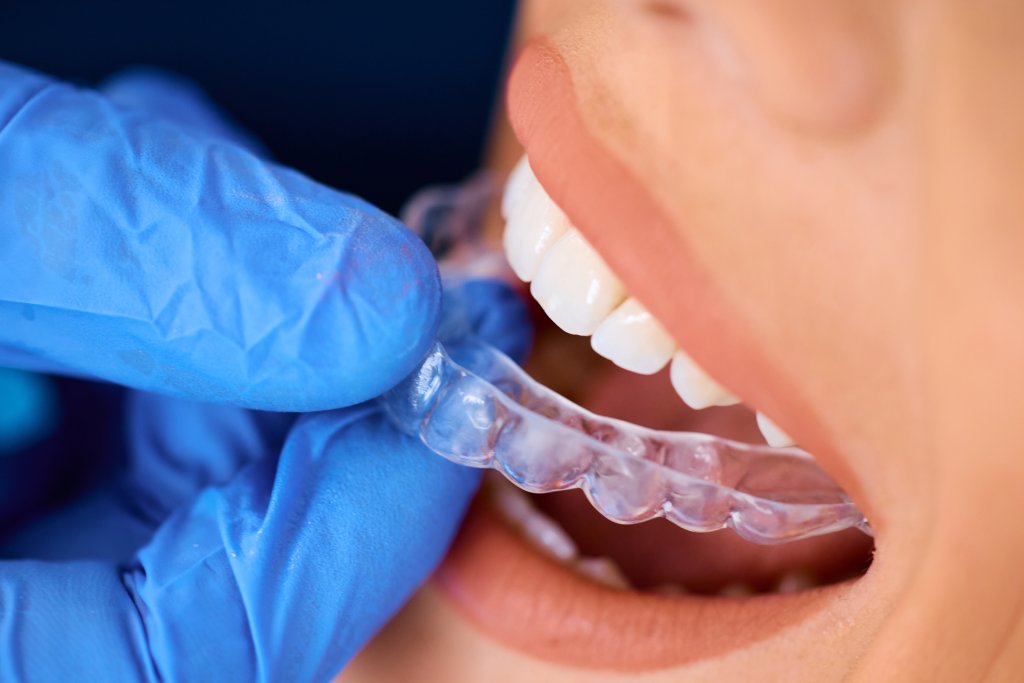Understanding Bone Grafting for Dental Implants
Bone grafting for dental implants is an essential process for those with jawbone loss, an issue more common than you might think. This procedure is crucial because it adds volume and density, building the necessary foundation for successful dental implants. If you are considering dental implants, it’s important to understand whether you might need a bone graft first.
- Bone loss: Often results from tooth extraction, gum disease, or trauma.
- Jawbone density: An intact and dense jawbone anchors implants securely.
- Dental implants: A reliable solution for replacing missing teeth and preventing further degradation of oral health.
I’m D.D.S. Marta Milejczyk, and I’ve been practicing dentistry in Chicago’s northwest suburbs since 1997. With experience in restorative and implant dentistry, I focus on creating strong dental foundations through bone grafting for dental implants to restore your smile and oral function.

What is Bone Grafting for Dental Implants?
Bone grafting for dental implants is a surgical procedure that restores jawbone volume. It’s vital for those experiencing bone loss, which can occur due to tooth extraction, gum disease, or injury. Without sufficient jawbone density, dental implants cannot be securely placed.
Why Bone Grafting?
When you lose a tooth, the jawbone in that area begins to deteriorate. This is because the bone no longer receives stimulation from the tooth root. Over time, this can lead to significant bone loss, making it difficult to place an implant.
Bone grafting helps in rebuilding this lost bone, ensuring there’s enough volume and density to support an implant. By doing so, it sets the stage for successful osseointegration.
What is Osseointegration?
Osseointegration is the process where the dental implant integrates with the jawbone. Think of it as the implant becoming a part of your body. This fusion is crucial for the implant’s stability and longevity.
Bone grafting plays a significant role here. It provides the necessary bone structure for the implant to anchor securely, promoting effective osseointegration. This integration ensures that your dental implants function like natural teeth, allowing you to eat, speak, and smile with confidence.
Types of Bone Grafts
There are several types of bone grafts used in dentistry:
- Autograft: Bone taken from another part of your body.
- Allograft: Bone from a donor.
- Xenograft: Bone from an animal, often bovine.
- Alloplast: Synthetic bone graft materials.
Each type has its benefits and is chosen based on the patient’s specific needs and medical history.
The Importance of Bone Grafting
Bone grafting is more than just a preparatory step for dental implants. It ensures the long-term success of the implant by providing a solid foundation. Without it, implants may not integrate properly, leading to complications or failure.
In summary, bone grafting for dental implants is essential for anyone with inadequate jawbone volume. It not only supports successful implant placement but also promotes overall oral health by preventing further bone loss.
Types of Bone Grafts
When it comes to bone grafting for dental implants, the type of graft used can make a big difference. Let’s break down the four main types of bone grafts: autograft, allograft, xenograft, and alloplast.
Autograft
An autograft is considered the “gold standard” in bone grafting. It involves using bone from another part of your own body, such as your hip or chin. This method is highly effective because the bone is your own, reducing the risk of rejection and promoting faster healing. However, it does require an additional surgical site, which can lead to more discomfort and a longer recovery time.
Allograft
Allografts use bone from a human donor. This type of graft is processed and sterilized to ensure safety. The advantage of an allograft is that it eliminates the need for a second surgical site, making the procedure less invasive. While the risk of disease transmission is extremely low due to rigorous processing, some patients may have concerns about using donor tissue.
Xenograft
Xenografts come from animals, most commonly cows (bovine). These grafts act as a scaffold for new bone growth and are gradually absorbed by the body. The primary benefit of xenografts is that they are readily available and do not require a second surgical site. They are popular in procedures like sinus lifts, where large volumes of bone are needed.
Alloplast
Alloplasts are synthetic bone graft materials. They are made from biocompatible materials that encourage bone growth and integration. Alloplasts are an excellent option for patients who prefer not to use human or animal tissue. They are also customizable to fit specific needs, but they may integrate more slowly compared to natural bone grafts.
Choosing the Right Graft
The choice of graft depends on various factors, including the patient’s medical history, personal preferences, and the specific requirements of the dental implant procedure. Your dentist or oral surgeon will discuss the best option for your case during your consultation.
Each type of graft has its unique benefits and potential drawbacks. Understanding these options is crucial for making an informed decision about your dental health.

The Cost of Bone Grafting and Implants
Understanding the cost of bone grafting for dental implants can help you plan for your dental care. Let’s explore the factors that influence the price and how insurance might help.
Average Cost
The cost of bone grafting varies widely. On average, a bone graft can cost anywhere from $200 to $3,000 per site. This range depends on the type of graft material used and the complexity of the procedure. For instance, an autograft, which uses your own bone, tends to be more expensive due to the additional surgery required.
Dental implants themselves can add significantly to the total cost. Without insurance, a single dental implant might cost between $3,000 and $6,000. This includes the implant, abutment, and crown.
State Variations
Where you live can also affect the cost. States with a higher cost of living generally have higher dental procedure prices. For example, prices in urban areas like Los Angeles or New York City are often higher than in smaller towns or rural areas.
Insurance Coverage
Dental insurance can sometimes offset the cost of these procedures, but coverage varies. Many dental plans do not cover implants because they are considered cosmetic. However, some plans may cover part of the bone grafting procedure if it’s deemed medically necessary.
Steps to Check Coverage:
-
Review Your Policy: Look for details on implant and bone graft coverage, including any waiting periods or maximum limits.
-
Talk to Your Dentist: Obtain a treatment plan and cost estimate to discuss with your insurer.
-
Contact Your Insurance Company: Confirm coverage specifics, including what percentage they cover and any out-of-pocket costs.
If your insurance denies coverage, you have the option to appeal. Gather any supporting documents, like second opinions or medical records, to strengthen your case.
Understanding the costs and potential insurance coverage can help you make informed decisions about your dental health. In the next section, we’ll explore the risks and complications associated with bone grafting and implants.
Risks and Complications
While bone grafting for dental implants is generally safe, there are some potential risks and complications. Understanding these can help you prepare and take steps to minimize them.
Infection
Infection is a risk with any surgery. After a bone graft, bacteria can enter the surgical site, leading to an infection. Signs of infection include:
- Redness and swelling around the graft site
- Persistent pain that doesn’t improve
- Fever or chills
To prevent infection, follow your dentist’s post-surgery care instructions closely. This often includes taking prescribed antibiotics and maintaining good oral hygiene.
Bleeding
Excessive bleeding can occur after a bone graft procedure. This is typically temporary but can be concerning. To minimize bleeding:
- Avoid strenuous activities for a few days
- Use gauze to apply gentle pressure to the area
- Keep your head liftd when resting
If bleeding persists or worsens, contact your dentist immediately.
Graft Failure
Though rare, graft failure can happen when the bone graft does not integrate properly with your existing bone. This can occur due to:
- Smoking, which affects blood flow and healing
- Poor oral hygiene
- Medical conditions like diabetes
Symptoms of graft failure may include:
- Persistent pain or discomfort
- Swelling that doesn’t subside
- Loose implants or graft material
Regular follow-up appointments are crucial to monitor healing and address any issues early. If you notice any unusual symptoms, report them to your dentist promptly.
By being aware of these risks and taking preventive measures, you can improve the chances of a successful outcome. Next, we’ll tackle some frequently asked questions about bone grafting for dental implants.
Frequently Asked Questions about Bone Grafting for Dental Implants
How painful is a bone graft for dental implant?
Pain Management: During the bone grafting procedure, you won’t feel pain thanks to anesthesia. Post-surgery discomfort is normal but manageable. Most patients report mild pain, which can be eased with over-the-counter pain relievers like ibuprofen. Always follow your dentist’s recommendations for pain management to ensure a smooth recovery.
Recovery Time: Recovery varies, but many patients resume normal activities within a few days. It’s crucial to avoid strenuous activities and follow any dietary restrictions advised by your dentist. Healing and integration with your jawbone can take several months, providing a strong foundation for dental implants.
How much does bone grafting cost for dental implants?
Cost Factors: The cost of bone grafting can vary widely based on the type of graft material used, the complexity of the procedure, and geographic location. On average, you might expect to pay anywhere from $300 to $3,000 for a bone graft. It’s best to consult with your dentist for a detailed estimate based on your specific needs.
Insurance Options: Dental insurance coverage for bone grafting can be limited. Some plans may cover a portion if the procedure is deemed medically necessary. It’s important to review your policy and discuss coverage options with your provider. Additionally, consider using pre-tax funds from an HSA or FSA to help offset costs.
What are the signs of a failed dental bone graft?
Symptoms: While rare, graft failure can occur. Watch for signs like persistent pain, swelling that doesn’t subside, or any unusual discharge. A failed graft may lead to loose implants or graft material.
Follow-Up Care: Regular follow-up appointments are crucial. Your dentist will monitor the healing process and address any issues quickly. If you notice any symptoms of graft failure, contact your dentist immediately for evaluation and potential corrective measures.
By understanding these aspects of bone grafting for dental implants, you can better prepare for the procedure and ensure a successful outcome. Next, we’ll conclude with the benefits of choosing DP Dental Studio for your dental needs.
Conclusion
Choosing the right dental care provider for bone grafting for dental implants can make all the difference in your treatment experience and outcome. At DP Dental Studio, we pride ourselves on offering a patient-centered approach that prioritizes your comfort and long-term oral health.
Patient Benefits: We know that dental procedures can be daunting, which is why we focus on making treatments as painless and stress-free as possible. Our team works closely with insurance providers to maximize your benefits, ensuring that costs are manageable. Whether you’re undergoing a simple procedure or something more complex like bone grafting, our experienced dentists will guide you every step of the way.
Welcoming Environment: From the moment you step into our clinic in Des Plaines, IL, you’ll notice our commitment to creating a welcoming and supportive atmosphere. We believe that a comfortable environment can greatly improve your overall experience. Our friendly staff is always ready to answer any questions and provide the reassurance you need.
For more information on how we can help you achieve a healthy, beautiful smile, visit our Dental Implants Service Page.
At DP Dental Studio, you’re not just a patient; you’re part of our family. We look forward to helping you on your journey to optimal oral health.

